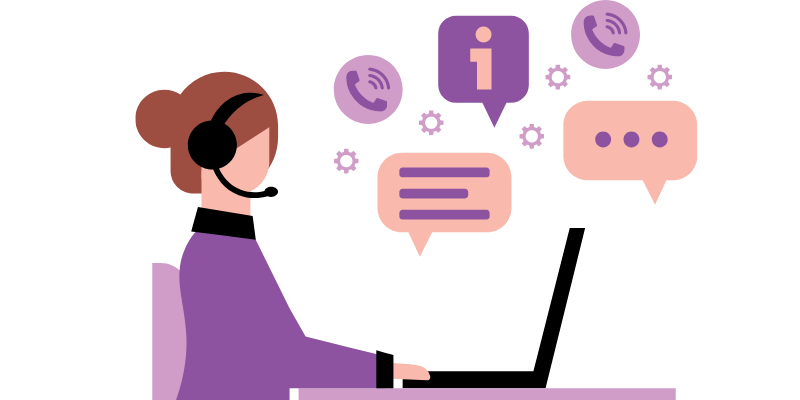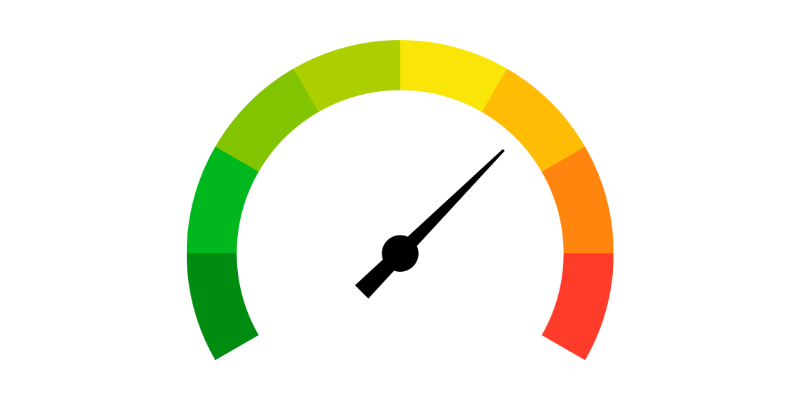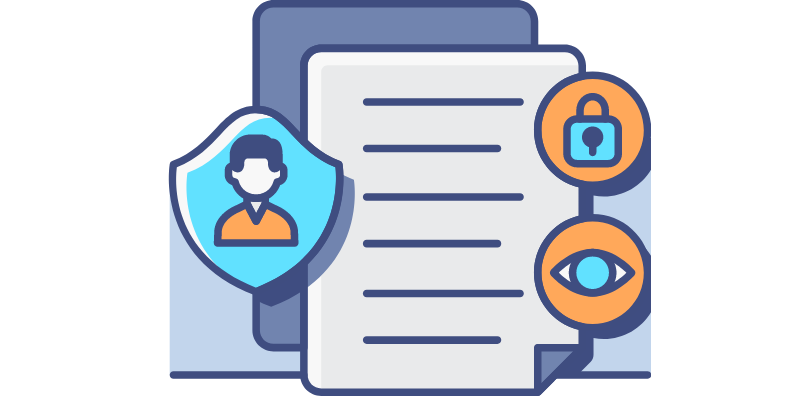Crafting Personalized Emails for Maximum Impact in 2024


Crafting Personalized Emails for Maximum Impact in 2024
In today's digital age, consumers are bombarded with countless emails daily. To stand out from the noise and drive sales, personalized emails have become a necessity. By tailoring content to individual preferences and behaviors, you can create a more engaging and effective customer experience. Let's explore how to leverage personalized emails in 2024 for maximum impact.
The Power of Personalization
Personalized emails go beyond simply using a recipient's name. They demonstrate that you understand your customers' unique needs and interests. By delivering relevant content, you're more likely to capture attention, build trust, and drive conversions.
Leveraging AI and Machine Learning for Personalized Emails

Artificial intelligence (AI) and machine learning (ML) have revolutionized the way businesses personalize their marketing efforts. By harnessing the power of these technologies, including custom AI solutions you can gain valuable insights into your customers' behavior and preferences, allowing you to deliver highly targeted and relevant email campaigns.
Predictive Analytics
- Targeted campaigns: Send emails to customers who are most likely to engage and convert.
- Personalized recommendations: Offer tailored product recommendations based on individual preferences.
- Churn prevention: Identify at-risk customers and take proactive steps to retain them.
- Optimized timing: Send emails at the optimal time to maximize engagement.
Dynamic Content
- Personalized greetings: Address recipients by their name and include other relevant personal details.
- Product recommendations: Display product recommendations based on the recipient's browsing history or purchase behavior.
- Dynamic visuals: Use images or videos that are tailored to the recipient's preferences or interests.
- Time-sensitive offers: Create offers that are relevant to the recipient's current location or time zone.
Focusing on the Customer Journey

A successful email marketing strategy requires a deep understanding of the customer journey. By tailoring your emails to each stage of the customer lifecycle, you can build stronger relationships, increase customer loyalty, and drive sales.
Nurturing Leads
- Welcome emails: Welcome new subscribers and introduce them to your brand and products.
- Educational content: Provide valuable content that addresses the needs and pain points of your target audience.
- Product demos: Offer personalized product demos or webinars to showcase the benefits of your products or services.
- Limited-time offers: Provide exclusive offers to entice leads to take the next step.
Cross-Selling and Upselling
- Product recommendations: Use AI-powered algorithms to recommend products that are relevant to the customer's purchase history and preferences.
- Upsell offers: Promote premium versions of your products or services to customers who have already purchased a lower-tier option.
- Bundle deals: Offer discounted bundles of complementary products to encourage customers to purchase more.
Customer Loyalty Programs
Rewarding loyal customers is essential for building long-lasting relationships and driving repeat business. Personalized emails can be used to create effective customer loyalty programs.
- Personalized offers: Offer exclusive discounts, promotions, or rewards based on the customer's purchase history and preferences.
- Tiered loyalty programs: Create tiered loyalty programs with different levels of rewards and benefits.
- Personalized recognition: Acknowledge and appreciate loyal customers through personalized emails and messages.
Optimizing for Mobile
In today's mobile-first world, it's essential to ensure that your emails are optimized for viewing on mobile devices. By creating responsive designs and tailoring content for mobile users, you can improve engagement and drive conversions.
Responsive Design
- Fluid layouts: Use fluid layouts that adjust to the width of the screen.
- Flexible images: Ensure that images are resized and scaled appropriately for different screen sizes.
- Large fonts: Use larger fonts that are easy to read on smaller screens.
- Clear calls to action: Use prominent and easily clickable buttons for calls to action.
Mobile-Specific Content
- Shorter subject lines: Keep subject lines concise and to the point.
- Clear and concise copy: Use simple language and avoid lengthy paragraphs.
- Single-column layouts: Opt for single-column layouts to improve readability on smaller screens.
- Mobile-optimized images: Use images that are optimized for mobile devices to reduce loading times.
Measuring and Iterating

- Tracking Metrics: Monitor key metrics like open rates, click-through rates, and conversions to gauge the effectiveness of your personalized emails.
- A/B Testing: Experiment with different personalization strategies to identify the most effective approaches.
- Customer Feedback: Gather customer feedback through surveys or social media to understand their preferences and improve your personalization efforts.
Prioritizing Data Privacy

In today's data-driven world, protecting customer privacy is more important than ever. By implementing robust data privacy measures, you can build trust with your customers and avoid legal and reputational risks.
Consent
Obtaining explicit consent from customers before collecting and using their personal data is a fundamental principle of data privacy. This means that customers must be informed about the types of data you collect, how it will be used, and their rights to access, correct, or delete their data.
Best practices for obtaining consent:
- Clear and concise language: Use simple and understandable language to explain your data collection practices.
- Opt-in approach: Require customers to actively opt-in to data collection and usage.
- Easy to find: Make the consent form easily accessible and visible on your website or in your emails.
- Regular updates: Keep your consent forms up-to-date to reflect any changes in your data practices.
Data Security
Protecting customer data from unauthorized access, disclosure, or misuse is essential for maintaining trust and compliance with data privacy regulations.
Key security measures:
- Encryption: Use strong encryption algorithms to protect data during transmission and storage.
- Access controls: Implement robust access controls to limit access to sensitive data.
- Regular monitoring: Monitor your systems for security threats and vulnerabilities.
- Incident response plan: Develop a comprehensive incident response plan to address data breaches and other security incidents.
Crafting Personalized Subject Lines
The subject line is the first thing a recipient sees when they receive an email. A well-crafted subject line can significantly impact open rates and engagement. By creating personalized and intriguing subject lines, you can increase the likelihood that your emails will be opened and read.
Relevance
The most important factor in creating effective subject lines is relevance. Ensure that the subject line is directly related to the recipient's interests or needs. This will make the email more likely to be opened and read.
- Use keywords: Incorporate keywords that are relevant to the recipient's interests or previous behavior.
- Reference specific content: Mention specific topics or products that are relevant to the recipient.
- Align with the email content: Make sure the subject line accurately reflects the content of the email.
Personalization
Personalizing your subject lines can make your emails feel more personal and relevant. Include the recipient's name or other personal details to create a sense of connection.
- Use the recipient's name: Include the recipient's name in the subject line to make the email feel more personalized.
- Reference specific preferences: Mention the recipient's preferences or past purchases in the subject line.
- Use a personal tone: Write the subject line in a conversational and friendly tone.
Timing Your Emails
Sending your emails at the right time can significantly impact their effectiveness. By understanding your audience's behavior and considering time zone differences, you can optimize your email delivery for maximum engagement.
Optimal Timing
The best time to send emails depends on your audience's preferences and behavior. Research your target audience to determine when they are most likely to check their email.
- Day of the week: Analyze your email analytics to identify the days of the week when your audience is most active.
- Time of day: Experiment with different times of day to see when your emails receive the highest open and click-through rates.
- Seasonal trends: Consider seasonal trends and holidays that may affect your audience's email behavior.
Behavior-Based Triggers
Triggering emails based on specific customer actions can increase their relevance and effectiveness. By sending emails at the right time, you can capitalize on opportunities to convert leads and drive sales.
- Abandoned cart emails: Send emails to customers who have abandoned their shopping carts to encourage them to complete their purchase.
- Welcome emails: Send welcome emails to new subscribers to introduce your brand and products.
- Purchase confirmation emails: Send confirmation emails to customers after they make a purchase.
- Re-engagement emails: Send emails to customers who have been inactive for a period of time to re-engage them with your brand.
Using Dynamic Content for Personalized Emails
Dynamic content allows you to personalize your emails in real-time based on various factors, such as the recipient's location, device, or previous interactions. By using dynamic content, you can create highly relevant and engaging emails that resonate with each individual recipient.
Personalized Recommendations
One of the most effective ways to use dynamic content is to offer personalized product recommendations. By analyzing the recipient's browsing history, purchase behavior, and other data points, you can recommend products that are highly relevant to their interests and needs.
Benefits of personalized recommendations:
- Increased engagement: Recipients are more likely to open and read emails that contain relevant product recommendations.
- Higher conversion rates: Personalized recommendations can lead to increased sales and conversions.
- Improved customer satisfaction: By providing tailored recommendations, you can demonstrate that you understand your customers' needs and preferences.
Dynamic Offers
Dynamic offers allow you to create personalized offers based on various factors, such as the recipient's location, device, or previous interactions. This enables you to provide offers that are most likely to appeal to each individual recipient.
Examples of dynamic offers:
- Location-based offers: Offer discounts or promotions based on the recipient's location.
- Device-based offers: Provide offers that are tailored to the recipient's device (e.g., mobile, desktop).
- Time-sensitive offers: Create offers that are only available for a limited time to create a sense of urgency.
Creating a Sense of Urgency
A sense of urgency can be a powerful tool for driving conversions. By creating a limited-time offer or using a countdown timer, you can encourage recipients to take action immediately.
Limited-Time Offers
Limited-time offers can create a sense of scarcity and urgency, motivating recipients to act quickly. When crafting limited-time offers, it's important to ensure that the offer is genuinely valuable and time-sensitive.
Examples of limited-time offers:
- Flash sales: Offer steep discounts on a limited number of products for a short period of time.
- Early bird discounts: Offer discounts to customers who purchase before a certain deadline.
- Limited-quantity offers: Indicate that there is a limited quantity of a product available.
Countdown Timers
Countdown timers can create a sense of urgency by showing recipients how much time they have left to take advantage of an offer. This can be particularly effective for limited-time offers or time-sensitive promotions.
Best practices for using countdown timers:
- Place the timer prominently: Ensure that the countdown timer is easily visible and prominent in your email.
- Use a clear and concise message: Clearly communicate the benefits of the offer and the time constraint.
- Test different timer formats: Experiment with different timer formats (e.g., days, hours, minutes) to see what works best for your audience.
Integrating SMS with Emails
In addition to personalized emails, SMS marketing can be a powerful tool for reaching customers and driving sales. By combining SMS solutions for sales, you can create a more comprehensive and effective marketing strategy. Here are some ways to integrate SMS into your personalized email campaigns:
- SMS Reminders: Send SMS reminders for upcoming appointments, deliveries, or promotions to keep customers engaged.
- SMS Opt-Ins: Allow customers to opt-in to receive SMS messages from your brand.
- SMS Coupons: Offer exclusive SMS-only coupons to incentivize purchases.
- SMS Surveys: Gather customer feedback through quick and easy SMS surveys.
- SMS Appointment Scheduling: Use SMS to confirm and reschedule appointments.
- SMS Follow-Up: Send SMS messages to follow up on email interactions or to provide additional information.
By effectively combining personalized emails with SMS marketing, you can create a more engaging and effective customer experience, leading to increased sales and customer loyalty.
Personalizing Beyond Email and SMS
- Social Media: Leverage social media platforms to personalize your interactions with customers and deliver targeted content.
- Website Personalization: Customize your website content based on the visitor's preferences, browsing history, or location.
- In-App Personalization: Personalize the user experience within your mobile app based on customer data.
Overcoming Challenges in Personalized Email Marketing
- Data Quality: Ensure that the data you're using for personalization is accurate, up-to-date, and relevant.
- Technical Limitations: Address technical challenges like email deliverability, spam filters, and rendering issues.
- Resource Constraints: Allocate sufficient resources for data collection, analysis, and personalization.
- Customer Resistance: Be mindful of customer privacy concerns and obtain explicit consent for data collection and usage.
Conclusion
Personalized emails are a powerful tool for building customer relationships and driving sales. By leveraging AI, focusing on the customer journey, and optimizing for mobile, you can create engaging and effective campaigns that resonate with your audience. Remember to prioritize data privacy, measure your results, and continuously iterate to refine your personalization strategies.


Newsletter
Join our newsletter today Get instant updates

20,000+ users subscribed to newsletter

.svg)
